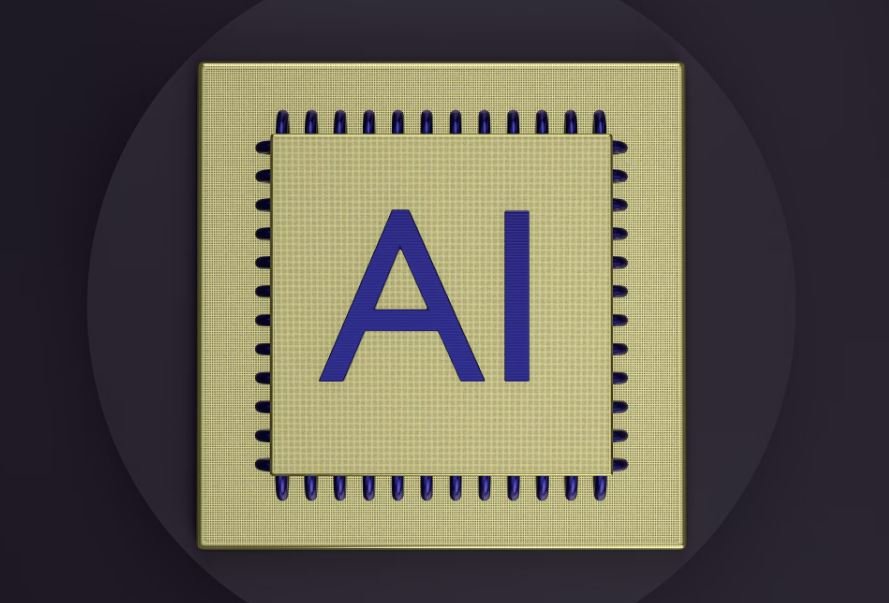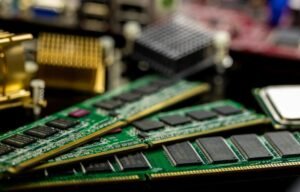AI: Good or Bad?
The rapid development and adoption of Artificial Intelligence (AI) has sparked debates on its implications for society. Some view AI as a powerful tool with endless possibilities, while others express concern over its potential risks and consequences. To evaluate this technology objectively, it is important to assess both the positive and negative aspects. This article aims to explore both sides of the argument around AI, ultimately leaving the reader to form their own opinion.
Key Takeaways
- AI has the potential to revolutionize various industries and improve efficiency.
- There are concerns over the ethical implications and job displacement caused by AI.
- Transparency, regulation, and responsible use of AI are crucial for ensuring its benefits outweigh the risks.
- AI should be seen as a tool rather than a replacement for human intelligence.
Positive Aspects of AI
AI offers several advantages that have the potential to enhance various aspects of our lives. One of the key benefits is automation, which can significantly improve efficiency and productivity in industries such as manufacturing, healthcare, and transportation. By automating repetitive tasks, AI allows humans to focus on more complex and creative endeavors. Additionally, AI systems can process and analyze vast amounts of data much faster than humans, enabling better decision-making and more accurate predictions.
Negative Aspects of AI
While AI presents exciting opportunities, it is not without its downsides. One major concern is the ethical implications surrounding AI. As AI becomes more advanced, questions arise regarding data privacy, algorithm biases, and the potential misuse of AI for surveillance purposes. Another crucial consideration is the potential for job displacement as AI technology replaces certain human tasks. It is estimated that millions of jobs could be at risk, requiring significant retraining or the creation of new roles.
The Importance of Transparency and Regulation
Given the potential risks associated with AI, it is essential to establish transparency and regulation in its development and deployment. Transparency ensures that AI systems are accountable and provide clear explanations for their decisions. Regulation helps prevent the misuse of AI and promotes responsible practices. Striking a balance between innovation and safety is crucial, as it allows society to benefit from AI’s potential without sacrificing ethics and human values. Transparency and regulation build trust in AI technologies.
The Role of Humans in the AI Era
While AI can perform numerous tasks autonomously, it is important to recognize that it should complement human intelligence rather than replace it. AI systems can assist humans in making more informed decisions, but they often lack empathy, creativity, and a deep understanding of complex human emotions. By embracing the collaboration between humans and AI, society can harness the full potential of this technology while ensuring human values are upheld. Human-AI partnership leads to the best outcomes.
| Industry | AI Adoption |
|---|---|
| Healthcare | 54% |
| Manufacturing | 47% |
| Finance | 42% |
Responsible AI Development
- It is important to prioritize ethics in AI development, ensuring fair treatment, non-discrimination, and respect for privacy.
- Transparent and explainable AI algorithms are essential for building trust and avoiding algorithmic biases.
- Data quality and unbiased training datasets are crucial to prevent AI systems from perpetuating existing biases and discriminatory practices.
- Education and upskilling programs are necessary to equip individuals with the skills needed to adapt to a changing job market influenced by AI.
| Occupation | Estimated Risk of Automation |
|---|---|
| Telemarketers | 99% |
| Bookkeeping Clerks | 98% |
| Cashiers | 97% |
Looking Ahead
Artificial Intelligence holds great promise and has the potential to improve various aspects of our society. Its positive impact can be maximized through responsible deployment, transparency, and regulation. While concerns exist, addressing them through proper guidelines and ethical practices will allow us to reap the benefits while mitigating risks. A balanced approach to AI development and use is crucial for a better future.

Common Misconceptions
Misconception 1: AI will replace humans completely
One common misconception about AI is that it will completely replace humans in the workforce and render many job roles obsolete. However, this is not entirely true. While AI does have the potential to automate certain tasks, it is meant to augment human capabilities rather than replace them entirely.
- AI can be used to handle repetitive and mundane tasks, allowing humans to focus on more creative and complex work.
- AI can provide valuable insights and support decision-making, but human judgment and emotional intelligence are still crucial in many areas.
- AI requires human input and ongoing maintenance to ensure it functions properly and ethically.
Misconception 2: AI is only about robots
Another common misconception regarding AI is that it is solely about physical robots. Although AI and robotics are often associated, AI extends beyond just physical machines. It encompasses various technologies, algorithms, and systems that enable machines to mimic human intelligence and perform tasks.
- AI can be embedded in software applications, providing intelligent functionality and improving user experience.
- AI algorithms are used in recommendation systems, personal assistants, and fraud detection, among many other applications.
- AI is employed in data analysis, natural language processing, computer vision, and other areas that do not involve physical robots.
Misconception 3: AI will inevitably become self-aware and pose a threat
Some people worry that AI will inevitably become self-aware, surpass human intelligence, and pose a threat to humanity. However, this misconception stems from science fiction depictions rather than the current reality of AI.
- AI operates on pre-defined rules and algorithms and lacks consciousness or self-awareness.
- The goal of AI is to assist humans and solve problems, not to become a superior being.
- AI ethics and governance frameworks are being developed to ensure responsible and safe use of AI technologies.
Misconception 4: AI technology is flawless
Another misconception surrounding AI is that it is infallible and perfect in its decision-making and analysis. However, like any other technology, AI systems have their limitations and can produce errors or biased outcomes.
- AI algorithms can be biased based on the data they are trained on, leading to unfair and discriminatory results.
- AI models may fail to generalize well to new and unseen scenarios, making them less reliable in certain situations.
- Regular testing, monitoring, and refining are necessary to ensure the accuracy and fairness of AI systems.
Misconception 5: AI does not impact our daily lives
Some individuals believe that AI technologies have a limited impact on their daily lives, considering them irrelevant to their routines. However, AI is increasingly integrated into numerous aspects of our lives, sometimes in ways we may not even realize.
- AI is present in voice assistants like Siri or Alexa, enabling us to interact with technology more naturally.
- AI powers recommendation algorithms on popular e-commerce platforms, influencing the products and content we encounter.
- AI helps detect and prevent fraud, enhance cybersecurity, and improve healthcare diagnostics, positively impacting our safety and well-being.

AI in Medicine
With the advancements in artificial intelligence, many industries are exploring its potential to improve efficiency and accuracy. In the field of medicine, AI has shown great promise in diagnosing diseases, predicting outcomes, and developing personalized treatment plans. The table below highlights some remarkable achievements of AI in the medical field.
| AI Application | Description | Data Source |
|---|---|---|
| AI for Diagnosing Skin Cancer | An AI system achieved a diagnostic accuracy of 95% in detecting skin cancer, comparable to that of dermatologists. | Journal of the American Academy of Dermatology |
| AI for Early Detection of Alzheimer’s | An AI algorithm analyzed brain scans and identified patterns that could predict the development of Alzheimer’s disease up to six years in advance. | University College London |
| AI for Predicting Heart Disease Risk | An AI model accurately predicted the likelihood of major cardiac events, such as heart attacks, using electronic health records and patient data. | Stanford University |
AI in Communication
Communication is an essential aspect of our daily lives, and artificial intelligence has played a significant role in enhancing various communication methods. The table below presents some fascinating applications of AI in the field of communication.
| AI Application | Description | Data Source |
|---|---|---|
| AI Language Translation | An AI-powered translation system translates speech or text in real-time, enabling seamless communication between different languages. | Google Translate |
| AI Chatbots | Chatbots equipped with natural language processing capabilities can engage in human-like conversations, addressing queries, and providing support. | Various companies utilizing chatbot technology |
| AI Speech Recognition | Speech recognition AI systems accurately transcribe spoken words, improving accessibility and enabling voice commands in personal devices. | Microsoft Azure Speech Services |
AI in Finance
The finance industry heavily relies on accurate data analysis and decision-making. Artificial intelligence has emerged as a valuable tool to enhance financial processes, as depicted in the table below.
| AI Application | Description | Data Source |
|---|---|---|
| AI-Powered Trading Algorithms | AI algorithms execute trades based on market trends and historical data, optimizing investment strategies and reducing human error. | Hedge funds and institutional trading firms |
| AI-Based Fraud Detection | AI models analyze vast amounts of financial data to swiftly identify fraudulent transactions and suspicious activities, minimizing losses. | Major banks and credit card companies |
| AI for Risk Assessment | AI systems assess credit risks by analyzing borrower data, enabling efficient loan processing and reducing default rates. | Financial institutions and lending platforms |
AI in Education
Artificial intelligence brings exciting possibilities for revolutionizing the education sector. The table below presents some instances where AI has made significant contributions to the field of education.
| AI Application | Description | Data Source |
|---|---|---|
| AI Tutoring Systems | AI-powered tutoring systems provide personalized learning experiences, adapting content to individual students’ strengths and weaknesses. | Various online learning platforms |
| AI Grading and Assessment | AI algorithms assess and grade assignments, reducing the burden on teachers and providing prompt feedback to students. | Universities and educational institutions implementing AI tools |
| AI for Curriculum Planning | AI algorithms analyze student data and learning patterns to optimize curriculum planning, ensuring relevance and efficacy. | School districts and educational policymakers |
AI in Entertainment
The entertainment industry has also embraced the potential of artificial intelligence to enhance user experiences and enable creative innovations. The table below showcases some captivating applications of AI in the entertainment sector.
| AI Application | Description | Data Source |
|---|---|---|
| AI-Generated Music | AI algorithms compose original music by analyzing extensive datasets of compositions, characteristics, and user preferences. | Various music streaming platforms |
| AI-Powered Virtual Actors | AI-driven virtual actors, using natural language processing and emotion recognition, can interact with audiences in live performances or virtual environments. | The Void, a virtual reality entertainment company |
| AI-Based Recommendation Systems | AI recommendation systems analyze user preferences, viewing history, and data patterns to suggest personalized content across various entertainment platforms. | Streaming services like Netflix and Spotify |
AI in Transportation
Artificial intelligence is transforming the way we travel, making transportation safer, more efficient, and sustainable. The table below highlights some notable applications of AI in the transportation sector.
| AI Application | Description | Data Source |
|---|---|---|
| AI-Based Traffic Management | AI systems analyze real-time traffic data to optimize traffic flow, reduce congestion, and improve transportation efficiency. | Transportation departments and smart city initiatives |
| AI for Autonomous Vehicles | AI algorithms enable autonomous vehicles to perceive the environment, make real-time decisions, and navigate safely on the roads. | Companies like Tesla, Waymo, and Uber |
| AI-Enhanced Public Transportation | AI systems optimize public transport routes, schedules, and fare systems, enhancing the overall convenience and experience for passengers. | Transportation agencies and local governments |
AI in Ecology
Artificial intelligence holds immense potential in preserving and protecting our environment. The table below showcases some remarkable applications of AI in ecological research and conservation efforts.
| AI Application | Description | Data Source |
|---|---|---|
| AI for Species Identification | AI models analyze images or audio recordings to accurately identify species, aiding in biodiversity monitoring and conservation efforts. | Efforts of organizations like Wildbook and Conservation Metrics |
| AI-Based Deforestation Monitoring | AI systems assimilate satellite imagery to detect and monitor deforestation activities in real-time, contributing to forest preservation initiatives. | Global Forest Watch and similar organizations |
| AI-Assisted Crop Management | AI platforms analyze sensor data, weather patterns, and crop characteristics to optimize irrigation, fertilizer usage, and yield prediction, promoting sustainable agriculture. | Agricultural technology companies utilizing AI |
AI in Manufacturing
Artificial intelligence is revolutionizing the manufacturing industry, enhancing automation and improving production efficiency. The table below exemplifies some intriguing applications of AI in manufacturing.
| AI Application | Description | Data Source |
|---|---|---|
| AI-Powered Quality Control | AI systems perform real-time quality inspections by analyzing video feeds or sensor data, minimizing defects and optimizing manufacturing processes. | Manufacturing companies implementing AI solutions |
| AI-Driven Predictive Maintenance | AI algorithms predict machine failures and schedule maintenance activities based on sensor data, reducing unplanned downtime and improving operational efficiency. | Industrial IoT sensor networks |
| AI-Enabled Supply Chain Management | AI optimizes supply chain operations by forecasting demand, managing inventory, and identifying potential bottlenecks, leading to cost savings and improved customer satisfaction. | Large-scale manufacturers and logistics companies |
AI in Social Media
Social media platforms heavily rely on artificial intelligence to deliver personalized content, facilitate interactions, and detect misleading information. The table below presents some noteworthy applications of AI in the realm of social media.
| AI Application | Description | Data Source |
|---|---|---|
| AI-Powered Content Recommendation | AI algorithms analyze user behavior, preferences, and social connections to curate and recommend relevant and engaging content on social media platforms. | Platforms like Facebook, Instagram, and TikTok |
| AI-Based Sentiment Analysis | AI models analyze text inputs to determine the sentiment and emotional tone of social media posts, helping understand public opinions and trends. | Social media analytics companies |
| AI-Enhanced Fake News Detection | AI technologies employ natural language processing and machine learning to identify and flag false or misleading information on social media platforms. | Fact-checking organizations and social media companies |
Artificial intelligence has undoubtedly opened up new frontiers across various industries. From healthcare and communication to finance and entertainment, AI has the potential to revolutionize many aspects of our lives. While it is important to address ethical and privacy concerns associated with AI, harnessing its power responsibly can yield remarkable benefits and shape a prosperous future for society.




